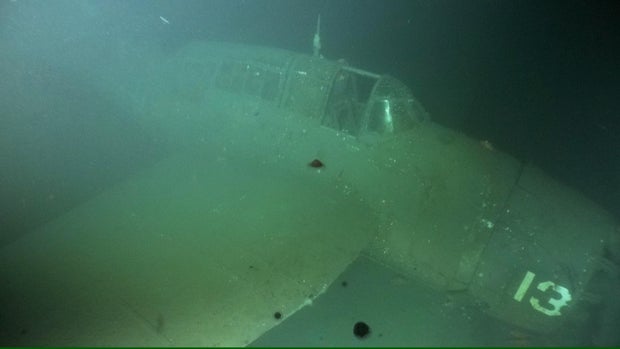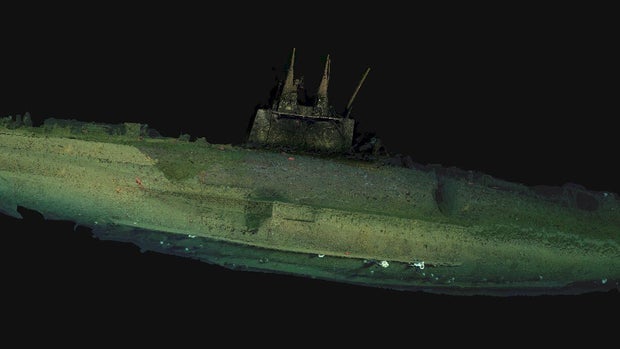
On Dec. 17, 1917, the U.S. submarine USS F-1 was lost at sea during a training accident off the coast of California, killing 19 crew members on board. Now, just days before Memorial Day, scientists have announced they have captured unprecedented images of the final resting place of the World War I-era sub more than 1,300 feet below the ocean’s surface
The high-definition pictures of the USS F-1 were captured after a group of interagency teams used cutting-edge deep-sea imaging technology during an expedition earlier this year, according to news release from the Woods Hole Oceanographic Institution.
USS F-1 collided with its sister ship, USS F-3, during exercises on the oean’s surface off San Diego eight days before Christmas in 1917, according to the Submarine Force Library and Museum Association. USS F-1 sank in just 10 seconds, and only five of the sub’s 24 crewmen were rescued. The sub was lost for nearly 60 years until it was located by a Navy deep submersible vehicle that was out looking for a jet fighter that crashed in 1972, the association said.
“It looked like a big ax had hit her,” said Lt. Dave Magyar, the pilot of the submersible that spotted the USS F-1, according to a newspaper story from 1976. But a close-up survey was not possible given the depth of the submarine.
Until now.
With assistance from the Office of Naval Research (ONR), the Naval History and Heritage Command (NHHC) and the National Science Foundation, the Woods Hole Oceanographic Institution team dispatched a human-occupied vehicle named Alvin as well as a remote underwater vehicle named Sentry to capture the close-up images.
Using sonar systems on Sentry and the research vessel Atlantis, the team was able to successfully conduct meticulous surveys of the submarine.
“Once we identified the wreck and determined it was safe to dive, we were able to capture never-before-seen perspectives of the sub,” said WHOI’s Bruce Strickrott, the senior pilot who helped lead the expedition. “As a U.S. Navy veteran, it was a profound honor to visit the wreck of the F-1 with our ONR and NHHC colleagues aboard Alvin.”
During the expedition, the team also captured images of a U.S. Navy Avenger torpedo bomber training aircraft that crashed near the same area in 1950. Scientists released video and images of the aircraft, showing a severely damaged tail and a bent front propeller.
The team conducted seven dives of the F-1 wreck site and the advanced sonar systems were able to produce detailed maps of the submarine and surrounding seafloor. Scientists also used high-resolution cameras to capture close-up video of the wreck.
Specialists then used all the data to stitch together “photogrammetric models capable of providing precise measurements of the sub and the animals that have colonized its wreckage over the years.” That allowed experts to reconstruct the F-1 submarine and produce stunning 3-D models of the wreck.
After the dives, the team held a remembrance ceremony on board Atlantis, ringing a bell 19 times—one for each crew member lost at sea.
“History and archaeology are all about people and we felt it was important to read their names aloud,” said underwater archaeologist Brad Krueger, who participated in the dives. “The Navy has a solemn responsibility to ensure the legacies of its lost Sailors are remembered.”
Source link





